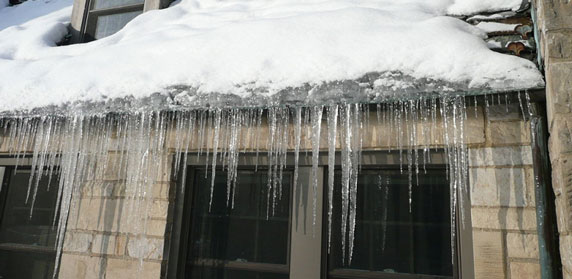The snow faucet is broken so watch out for ice dams
By Chris Williams on February 11, 2015.

Hahaha, you have to love living in New England during the winter. Here I was thinking we were headed for a brown winter with no snow on the ground at Christmas time and just a little crust of ice on the ground just a bit over two weeks ago then shazam, now we’re buried! The faucet is broke! I’ve almost lost count; are we up to five storms or is it seven?
Not only has it not stopped snowing, but temperatures have been really cold also. I’ve always thought that it could be too cold to snow and indeed I’ve recalled it warming up, as snow would move in. Only one of the snow events recently was on the warmer side (up around 30 degrees), and this week, the temperature is sitting at 15 degrees it snowed once again. I guess the only good news is that it is powdery, fluffy snow that is easy to move and not like wet cement! It is, however, getting a bit difficult to find places to put it.
I’ve been dragging out the roof rake quite a bit lately to try and avoid ice dams. I haven’t done a great job of it so far, as still I have them. It is pretty easy to see how water from melting snow can sit there and then back up under the shingles. As water migrates inside the home, you may start to see wet spots on the ceiling. You might also discover soaked flooring from water that has seeped down through the walls. Keeping my fingers crossed about that not happening.
Can ice dams lead to insect issues further down the road? The answer is possibly yes. Besides the obvious signs of water damage (staining on drywall), other less noticeable damage could be happening to your home to cause more serious problems later on. Water-soaked areas can take months to dry out on their own. Wet insulation in attics and walls will support the growth of mold and mildew, and possibly the decay of wood framing. This type of situation is ideal for supporting an infestation of carpenter ants. Within the home, carpenter ants prefer to nest in areas with high humidity. In the case of the ice dam aftermath, damp insulation will provide this need quite nicely. Also, an expanding colony of carpenter ants may cause further damage to the home by excavating galleries in water-damaged framing.
Happy winter everyone!!